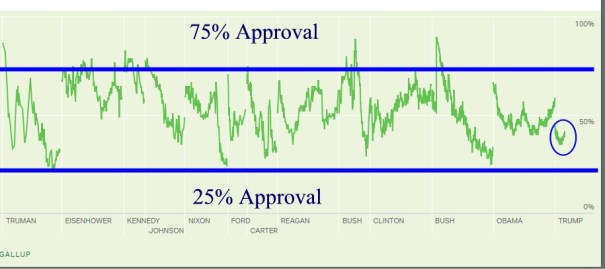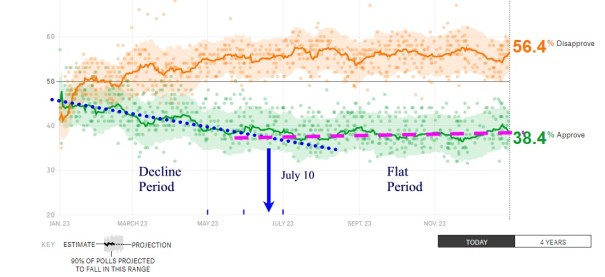Three organizations (APSA, Siena and C-Span) provided rankings of US presidents. These rankings were based on surveys of historians, generally from well known universities. The APSA (American Political Science Association) and Siena (Siena College Research Association) were done in 2018, so they do not reflect the last two years of Trump’s term in office.
Donald Trump was 45th president of the United States, however since Grover Cleveland was the 22 and 24th president, it means there were really 44 presidents. It is convenient to divide these rankings by quartiles, as ranks 1 to 10 are the top ranked presidents and 34 to 44 are the lowest ranked presidents. Wikipedia has consolidated these surveys and also provides a breakout of the ranking of various factors, such as integrity and leadership of each of these surveys.
Trump is considered one of the five worst presidents in these three surveys. C-SPAN rates Trump as the fourth worst president in history.
| Survey | Trump (#45) | Pierce (#14) | Buchanan (#15) | Andrew Johnson (#17) | Harding (#29) |
| APSA (2018) | 44 | 41 | 43 | 40 | 39 |
| Siena (2018) | 42 | 40 | 43 | 44 | 41 |
| C-SPAN (2021) | 41 | 42 | 44 | 43 | 37 |
Since Harding’s term was from 1921 to 1923, the surveys rank Trump at a level not seen about 100 years. So, what qualities are lacking in Trump and the other presidents in this table? Siena ranks Trump as the worst (rank = 44) in the areas of background, integrity, ability to compromise and executive appointments. Interestingly, he has high rating in “luck” and is in the third quartile in “willing to take risks.”
Similarly, C-Span (2021) puts Trump last of all presidents in the category of moral authority and administrative skills. He is in the bottom of the fourth quartile as are Pierce, Johnson and Buchanan in all categories (crisis leadership, economic management, international relationship and relations with congress) with the notable exception of public persuasion, where he is the ranked in the third quartile.
His continual stream of lies did not go unnoticed by the scholars. Getting the lowest ranking of any president in integrity (Siena) and moral authority (C-Span) reflect this. Donald Trump was never very interested in the truth, as his narratives were generally built on a stack of lies.
Being ranked lowest in “background” is pretty bad, but I believe accurate, as he never held office prior to being president.
The president is elected to do what is best for the country and not himself. This is part of the moral authority that great presidents have displayed. The January 6 committee will have public hearings in the spring, and will, I am certain, show Donald Trump had total disregard for the constraints of presidential power in his attempt to alter the outcome of the 2020 election. It is unprecedented in American history.
So what is this quality missing from these surveys? I guess it is “humility and respect” which Trump was not. He was arrogant and disrespectful of the system.
Stay tuned,
Dave
Links:
Wikipedia: Historical Ranking of US Presidents
Siena College US President Study Historical Ranking

